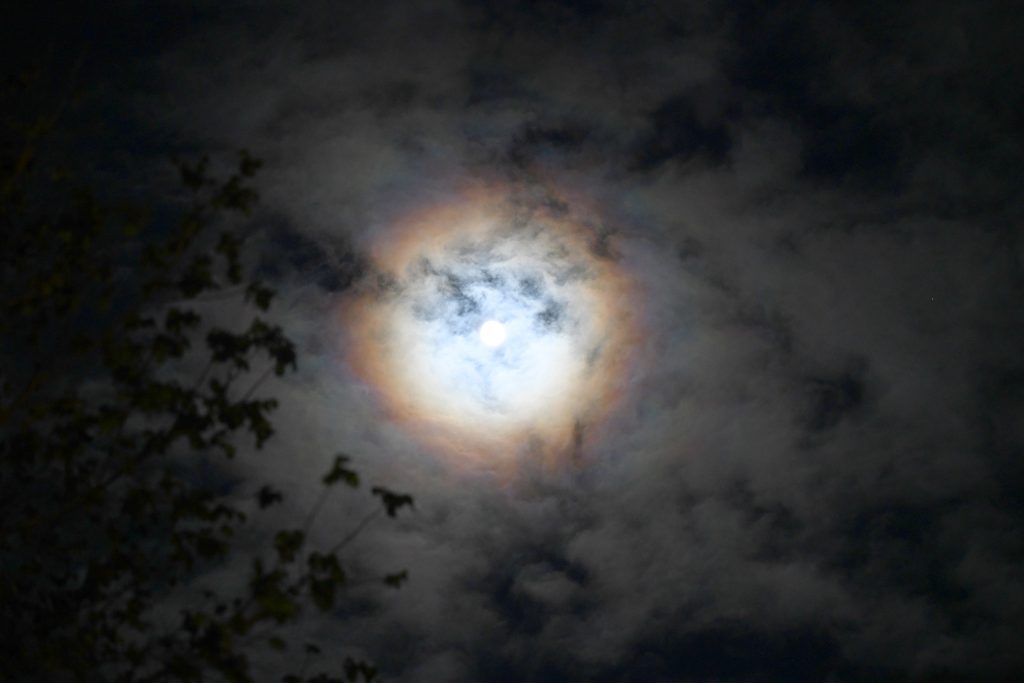
Despite their best attempts, the clouds over Nashville and much of Tennessee weren’t able to completely obscure the partial lunar eclipse of September 17, 2024, for some. The featured image was obtained by Dyer Observatory director Dr. Billy Teets using a portable telescope setup to capture the eclipse while still in the penumbral phase. The imaging system consisted of a TeleVue NP101 refractor with ZWO ASI533MC Pro camera mounted on a Vixen Sphinx go-to equatorial mount. Instead of taking a single picture, the image above was created by stacking nearly 600 frames from a 30-second video to reduce the blurring effects of atmospheric turbulence. Afterward, a bit of processing to adjust contrast, brightness, gamma, etc., helped to highlight various features of the shaded lunar surface.
Though the clouds were regarded as unwelcome visitors, they did redeem themselves a bit. As portions of the clouds passed in front of the eclipsed Moon, there were periods when the clouds’ water droplets created a beautiful effect around the Moon known as a corona. This is not the same type of corona observed during the total phase of a solar eclipse (i.e., the gorgeous white outer atmosphere of the Sun). The corona created by clouds is very colorful and due to light diffracting, or bending, slightly around the edges of the droplets, separating the individual hues of white light. The smaller the droplets, the greater the diffraction effect, and the larger the resulting corona. The appearance of the corona is also affected by the uniformity of the droplet size – the more uniform, the more pronounced the colors. This effect can sometimes also be seen around the Sun as thin clouds pass over it.

The next lunar eclipse will occur on March 13-14, 2025, and Tennessee will be well placed to view the entire event (at least for night owls). This lunar eclipse will be a spectacular total lunar eclipse in which the Moon will move completely within the dark umbra of Earth’s shadow, bathing the Moon in a deep crimson light. The entire eclipse, including the penumbral, partial, and total phases, lasts right at six hours and begins at 10:57pm local time in Nashville. Full eclipse occurs by 2:31am CDT, so be sure to set an alarm to get a nice view of the “Blood Moon.” Though lunar eclipses (and solar eclipses) each occur twice a year, location plays a large role in who can observe them. The second lunar eclipse of 2025 occurs September 7-8, 2025, and will be visible for the half of the globe that missed the March eclipse. Will you be able to see the total lunar eclipse of March 2025? Check out the animation below to find out.